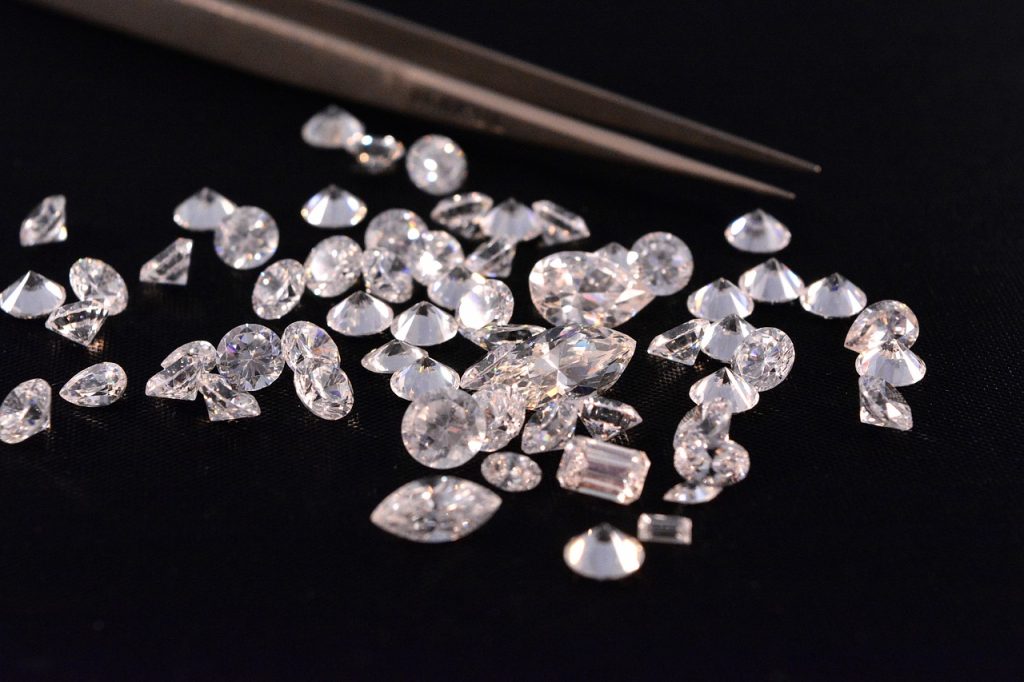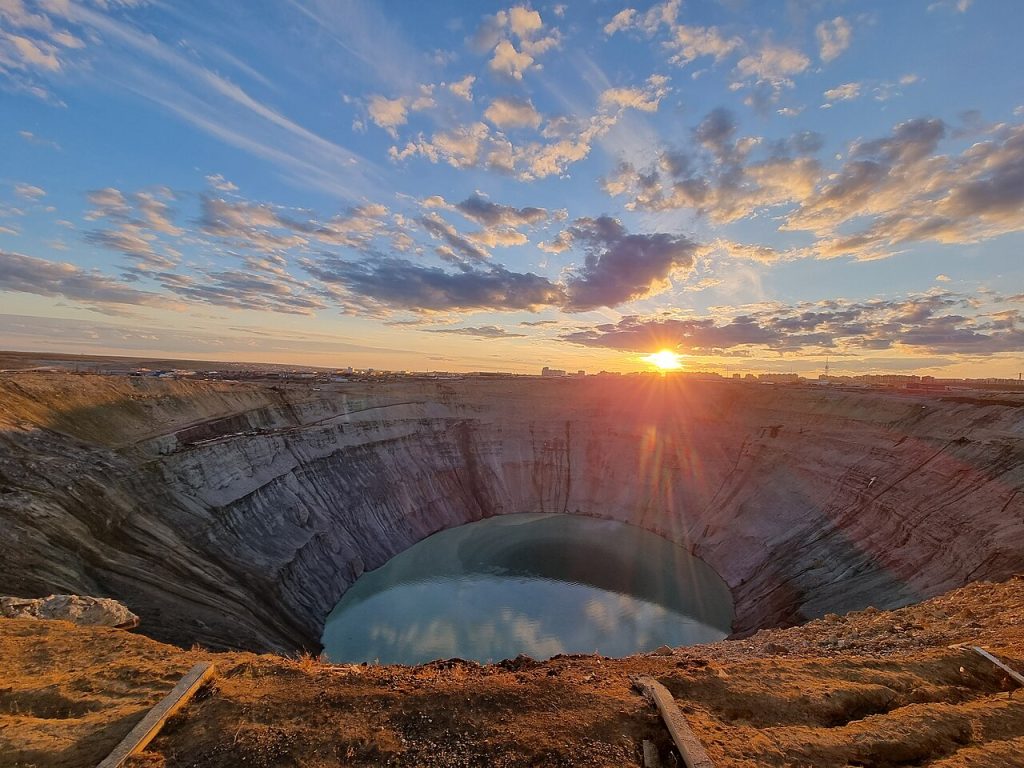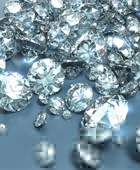Diamond mining has played a fundamental role in the global economy, shaping industries, economies, and even the course of history. The discovery of diamonds has often led to economic booms, attracting both investors and enthusiasts interested in the rarity and value of these precious stones. Some of the world’s most famous diamond mines have yielded exceptional gemstones that have become legendary, including the Cullinan Diamond and the Koh-i-Noor. These mines are not only significant for their historical and economic impact but also serve as benchmarks for modern diamond exploration and extraction techniques.
The diamond mining industry is concentrated in specific regions known for their rich geological formations. Countries such as South Africa, Botswana, Russia, Canada, and Australia host some of the most productive mines in the world. Each mine operates under unique geological conditions, requiring specialized mining techniques such as open-pit mining, underground mining, and marine diamond recovery. For investors, understanding the operational efficiency, output, and sustainability of these mines is crucial for evaluating potential investment opportunities. For enthusiasts, exploring the legacy of these mines provides insight into the fascinating world of diamonds, from their formation deep within the Earth to their eventual transformation into prized gemstones.
In this guide, we will explore some of the world’s most famous diamond mines, their contributions to the global diamond industry, and what makes them significant for both enthusiasts and investors alike. We will examine their historical discoveries, operational details, and the types of diamonds they produce, providing a comprehensive overview of the mining sector’s most iconic sites.

The Cullinan Mine (South Africa): The Source of the World’s Largest Diamond
Located in South Africa’s Gauteng province, the Cullinan Mine is one of the most famous diamond mines in the world, best known for producing the Cullinan Diamond, the largest gem-quality rough diamond ever discovered. This extraordinary diamond, unearthed in 1905, weighed 3,106 carats and was later cut into several smaller gems, including the Great Star of Africa (Cullinan I) and the Lesser Star of Africa (Cullinan II), which are now part of the British Crown Jewels.
The Cullinan Mine, formerly known as the Premier Mine, has been in operation since 1902 and continues to be a leading source of exceptionally large and high-quality diamonds, particularly blue diamonds, which are among the rarest and most valuable gemstones. These blue diamonds, containing trace amounts of boron, exhibit unique hues that make them highly sought after by collectors and investors. In recent years, the mine has produced record-breaking stones, including the Blue Moon of Josephine, a vivid blue diamond weighing 12.03 carats, which sold for over $48 million at auction.
For investors, the Cullinan Mine remains a stronghold in the diamond market due to its consistent production of high-value stones. Enthusiasts interested in the history of legendary diamonds often look to Cullinan for its significant contributions to the world’s most famous jewels. Today, the mine is operated by Petra Diamonds, a company that has continued to enhance its mining operations while maintaining a reputation for producing some of the most remarkable diamonds in history.
The Jwaneng Mine (Botswana): The Richest Diamond Mine in the World
Situated in the Kalahari Desert of Botswana, the Jwaneng Mine is often referred to as the richest diamond mine in the world in terms of value. Owned and operated by Debswana, a partnership between the Botswana government and De Beers, Jwaneng contributes significantly to Botswana’s economy and is a critical source of high-quality diamonds. Opened in 1982, this open-pit mine produces an estimated 10 to 15 million carats of diamonds annually, making it one of the most productive diamond mines globally.
Jwaneng is notable not just for its high volume of diamond production but also for the quality of its output. The mine yields an exceptional percentage of gem-quality diamonds, with a relatively low proportion of industrial-grade stones. This high-quality production contributes to Botswana’s strong position in the international diamond market and reinforces the country’s reputation as a stable and responsible diamond-producing nation. The revenue generated from Jwaneng has played a crucial role in Botswana’s economic development, infrastructure expansion, and education programs, demonstrating how diamond mining can have a positive impact on national prosperity.
From an investment perspective, Jwaneng is a key asset within De Beers’ global portfolio, ensuring long-term supply stability for the diamond industry. The mine has also undergone significant technological upgrades, including the implementation of automated ore processing systems and advanced sorting technologies that improve efficiency and reduce waste. For enthusiasts, Jwaneng’s status as the world’s richest mine adds to its allure, making it a fascinating case study in the balance between economic impact, sustainability, and technological advancements in diamond mining.
The Mir Mine (Russia): A Soviet-Era Marvel of Diamond Mining
One of the most visually striking diamond mines in the world, the Mir Mine, located in the Sakha Republic of Russia, is an immense open-pit mine that once held the title of the largest diamond mine in the Soviet Union. The mine was discovered in 1955 and became operational in 1957, playing a crucial role in supplying diamonds to the global market during the Cold War era. The Mir Mine, also known as the Mirny Mine, reached a depth of over 1,700 feet (525 meters), making it one of the deepest open-pit mines ever excavated.
During its peak production years, Mir produced over 10 million carats annually, contributing significantly to Russia’s dominance in the diamond industry. The mine became famous for yielding large, high-quality diamonds, including a 342-carat diamond that once held the record for the largest diamond found in the Soviet Union. In its early years, Mir was so productive that Soviet authorities tightly controlled its diamond output, ensuring that the country maintained a stronghold over the industry.
Although open-pit operations at Mir ceased in 2001, underground mining continued until 2017, when a catastrophic flooding incident led to the closure of the mine. Despite this, Mir remains an essential part of Russia’s diamond legacy and continues to influence discussions on the country’s resource wealth. For investors, Russia’s diamond industry, led by Alrosa (the country’s largest diamond mining company), remains a key player in global markets, ensuring that the legacy of mines like Mir continues to impact diamond supply and pricing.
For enthusiasts, the Mir Mine is a symbol of Soviet engineering and resilience, representing one of the greatest feats in mining history. Its sheer size, historical significance, and contributions to Russia’s diamond dominance make it one of the most fascinating mines ever operated.

The Argyle Mine (Australia): The Legendary Source of Pink Diamonds
The Argyle Diamond Mine, located in the remote East Kimberley region of Western Australia, is one of the most famous diamond mines in history due to its production of rare pink diamonds. Operated by Rio Tinto, the mine opened in 1983 and became one of the world’s most significant sources of diamonds, producing over 90% of the world’s pink diamonds. These diamonds are among the rarest and most valuable gemstones, often fetching record-breaking prices at auctions due to their unique coloration and scarcity.
Unlike most major diamond mines, which primarily yield colorless diamonds, Argyle was notable for its wide variety of diamond colors, including pink, red, champagne, and cognac hues. The pink diamonds, in particular, were highly prized due to their extreme rarity and the unknown origins of their coloration. Scientists believe that the pink coloration results from intense geological pressure that alters the crystal lattice of the diamonds, making them structurally different from traditional white diamonds.
Argyle operated as an open-pit mine for most of its life before transitioning to underground mining in 2013. However, as diamond resources became depleted, Rio Tinto decided to close the mine in November 2020, marking the end of an era in pink diamond production. Since its closure, the value of Argyle pink diamonds has skyrocketed, making them a coveted asset among collectors and investors.
For investors, the closure of the Argyle Mine has created a scarcity-driven market for pink diamonds, leading to speculation that their value will continue to rise over time. For enthusiasts, the mine remains one of the most fascinating sources of unique diamonds, representing a once-in-a-lifetime geological phenomenon that forever changed the industry.
The Diavik Mine (Canada): A Modern Engineering Marvel in the Arctic
The Diavik Diamond Mine, located in Canada’s Northwest Territories, is one of the most remarkable diamond mines in the world due to its harsh Arctic environment and its role in establishing Canada as a major diamond producer. Situated on a small island in Lac de Gras, about 220 kilometers south of the Arctic Circle, Diavik is an engineering marvel that operates year-round despite extreme temperatures that can drop as low as -40°C (-40°F) in the winter.
Diavik was discovered in the 1990s and began production in 2003, quickly becoming one of Canada’s largest and most productive diamond mines. It is jointly owned by Rio Tinto (60%) and Dominion Diamond Mines (40%) and produces an estimated 6 to 7 million carats of diamonds annually. Unlike many other diamond mines that rely on traditional open-pit operations, Diavik required innovative engineering solutions due to its location. The mine is surrounded by water, so engineers had to construct dikes to drain sections of the lake, creating a dry area for mining. This technique, known as dike mining, allowed for efficient extraction while protecting the fragile Arctic ecosystem.
One of Diavik’s most significant contributions to the diamond industry is its emphasis on environmental sustainability and ethical mining practices. The mine operates with strict environmental standards, including carbon emission reduction programs, wildlife monitoring, and land reclamation efforts. Additionally, the mine is powered in part by wind energy, making it one of the most sustainable diamond mines in the world.
For investors, Diavik represents an important part of the ethical diamond movement, as Canadian diamonds are often favored for their traceability and adherence to strict labor and environmental regulations. For enthusiasts, Diavik is a fascinating example of how modern technology and engineering can overcome extreme natural challenges to extract some of the world’s most valuable diamonds.
The Catoca Mine (Angola): A Leading Producer of Industrial Diamonds
Located in Angola, the Catoca Diamond Mine is one of the largest diamond mines in the world and the leading producer of industrial-grade diamonds. The mine, which opened in 1997, is responsible for approximately 75% of Angola’s total diamond output, producing over 7 million carats annually. Catoca is an open-pit mine and is operated by a consortium of international companies, including Endiama (Angola’s national diamond company), Alrosa (Russia’s leading diamond producer), and China’s Lev Leviev Group.
Unlike mines such as Cullinan or Argyle, which are known for producing rare and valuable gem-quality diamonds, Catoca’s output is predominantly lower-grade diamonds used in industrial applications such as cutting tools, drilling equipment, and scientific instruments. Despite this, the mine has occasionally yielded high-quality gemstones, some of which have exceeded 100 carats in size.
From an investment perspective, Catoca plays a crucial role in the global industrial diamond market, which is essential for various industries, including construction, manufacturing, and technology. The mine’s location in Angola, a country rich in natural resources, also highlights the increasing importance of African diamond producers in shaping the future of the diamond trade. For enthusiasts, Catoca represents the scale and diversity of diamond mining, demonstrating that not all diamonds are destined for jewelry but are equally valuable for industrial progress.
Conclusion: The Impact and Legacy of the World’s Most Famous Diamond Mines
The world’s most famous diamond mines have shaped history, fueled economies, and influenced global markets for centuries. From the legendary Cullinan Mine in South Africa to the pink diamond-rich Argyle Mine in Australia, each mine has contributed something unique to the industry. Some, like Jwaneng and Diavik, continue to thrive and innovate, while others, like Mir and Argyle, have ceased operations but left behind an incredible legacy.
For investors, understanding these mines is essential for evaluating opportunities in the diamond market. Mines with consistent high-quality production—such as Jwaneng and Diavik—tend to be strong long-term investments, while mines known for rare and collectible diamonds, such as Argyle, present opportunities for scarcity-driven value appreciation. Furthermore, the industry is shifting toward sustainable mining practices, meaning that environmentally responsible mines like Diavik are likely to set the standard for future developments.
For enthusiasts, exploring these mines offers a glimpse into the extraordinary journey of diamonds, from their deep Earth formation to their transformation into priceless gemstones. Whether it’s the historical intrigue of Mir, the economic powerhouse of Jwaneng, or the unparalleled rarity of Argyle’s pink diamonds, each mine tells a unique story about the evolution of the diamond industry.
As the demand for diamonds continues to evolve—shaped by trends in lab-grown diamonds, sustainability, and ethical sourcing—the role of these famous mines will remain crucial in shaping the industry’s future. Investors and enthusiasts alike can learn valuable lessons from the successes, challenges, and innovations of these legendary sites, ensuring that the fascination with diamonds remains as strong as ever.




